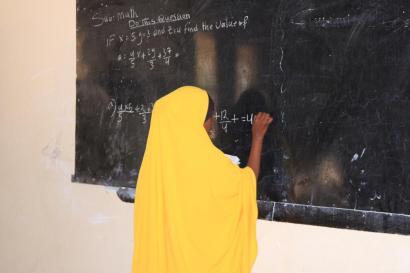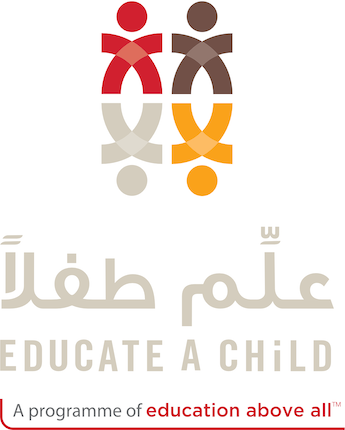Mercy Corps and EAC partner to bring children back to school in Somalia

Somalia has one of the world’s lowest enrollment rates for primary education. Since the collapse of the education system in the early 1990s, the majority of children have continued to be deprived of formal schooling. Only 30 percent of school-aged children have access to learning opportunities while more than three million children of school-going age remain out-of-school, primarily in southern and central Somalia. Only 17 percent of children living in rural areas or in internationally displaced person (IDP) settlements are enrolled in primary school.
Against this backdrop, Mercy Corps, in partnership with Educate A Child (EAC), and implemented in consortium with Mercy USA, has led the Wax Bar Carruurta Soomaaliyeed, also known as the Educate Somali Children (ESC) program, since 2018. This three-year program was designed to increase access to quality and equitable primary education for 42,071 Somali Out-of-School-Children (OOSC) across the Federal Member States of Galmudug, Hirshabelle, South West, Jubbaland, and Banadir region as well as in Puntland and Somaliland.
Overall, the program applied the following strategies and approaches to enhance access and retention of OOSC:
- Partnership with the Ministry of Education (MoE), community-level leadership, and other stakeholders
- Reduction of school-related costs, which was a major barrier to access across all target locations
- Provision of alternative education services to help overaged out-of-school children quickly catch up in order to reintegrate them into the formal education system
- Improvement of the relevance and quality of teaching and learning
- Improvement and expansion of school infrastructure
The Wax Bar Carruurta Soomaaliyeed Educate Somali Children (ESC) program made great strides in the first year of implementation. The program enrolled 22,048 OOSC across 92 target schools (73 in South Central Somalia, 6 in Somaliland, and 13 in Puntland). As of December 2019, 86 percent of the newly enrolled OOSC were still attending school, while 5 percent completed their primary education and successfully transitioned to secondary education.
With the generous support of EAC, the program implemented the following key interventions at school and community levels in the first year of the program:
- Mobilization of 130 communities to identify and register out-of-school children
- Expansion of infrastructure and other essential facilities in 49 schools, including safe temporary learning spaces for OOSC who are also IDPs
- 106 schools provided with supplies and other materials (desks, teaching/learning materials) to enhance quality of learning
- 35 new partnerships established to enhance access and retention of OOSC (27 gender forums and 8 women councils)
- 156 (121 males, 35 females) teachers trained to improve the quality of education and learning outcomes
- 7 schools and 27 communities provided with basic water and sanitation services to enhance continuity of OOSC education
- Constructed 262 latrines to provide health, and water and sanitation community infrastructure support
- 66 schools supported with school grants to support the development and implementation of school improvement plans
- 67 teachers and MoE staff trained on gender and gender mainstreaming
